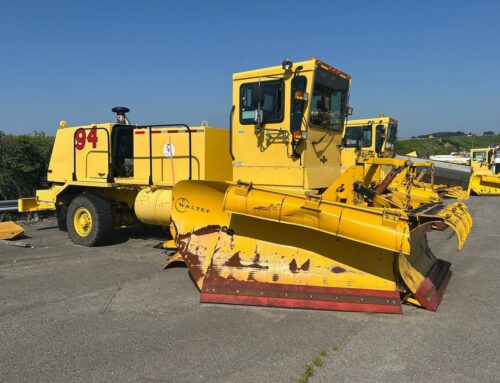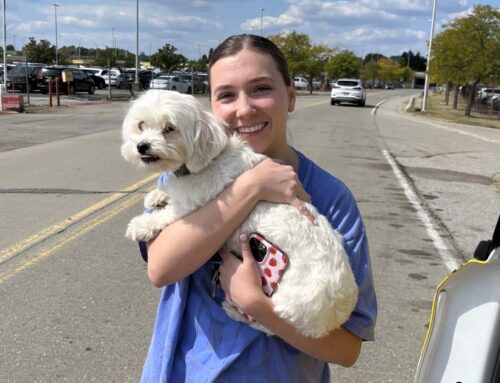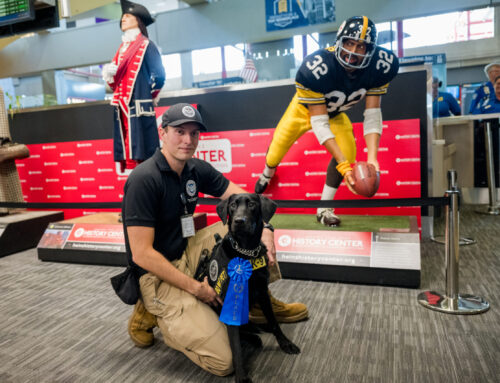Airport Fire Departments Stand Ready for Anything
Firefighters train, prepare for situations most municipal departments never see
By Stacey Federoff
Published May 24, 2021
Read Time: 5 mins
When an emergency call comes in from an airplane at just about any airport in the country, help is only three minutes away.
The Federal Aviation Administration requires airport fire departments to answer those calls as part of Aircraft Rescue and Firefighting, commonly known as ARFF.
But these first responders handle much more than fires or crashes involving airplanes and passengers, which are thankfully rare.
“We are more than just your typical fire department,” said Denise Pouget, fire chief of the Metropolitan Washington Airports Authority, which serves Reagan National and Dulles International airports. “Our training and preparedness must meet many additional required certifications in order to meet federally mandated regulations. That should give passengers and the greater airport community confidence that every aspect of their safety is being considered when coming to our airports.”
The biggest key to quick response is being prepared, said Ron Krusleski, chairman of the ARFF Working Group, a Texas-based organization that connects airport fire departments around the world.
“Preparedness starts with risk assessment, then you look at your critical tasks,” he said.
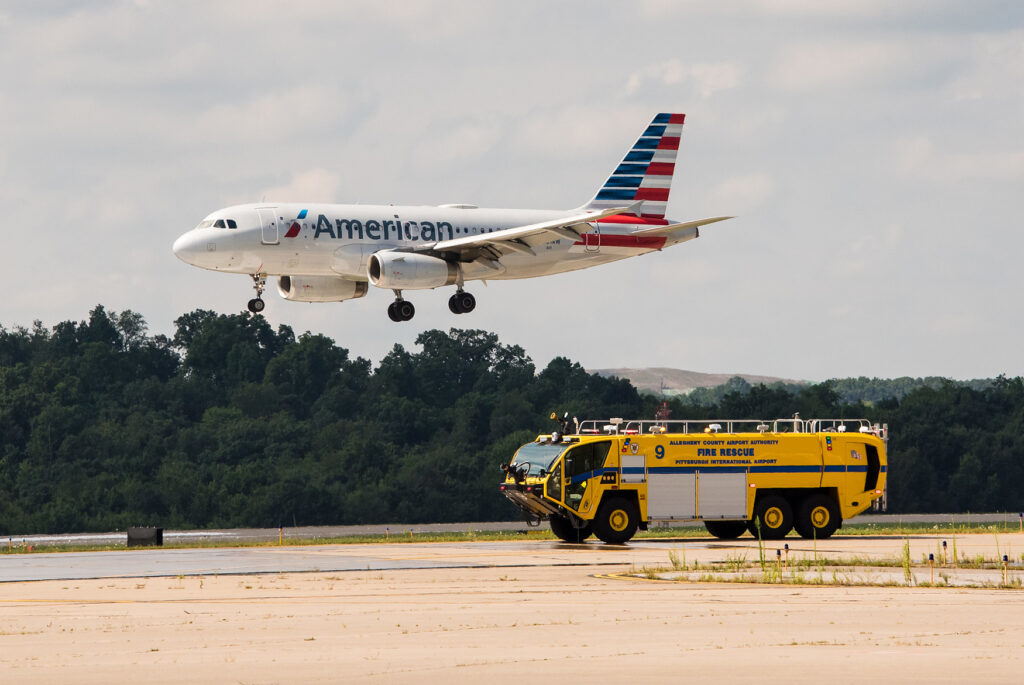
Airport firefighters must be prepared to handle any emergency event on an airfield. (File photo by Beth Hollerich)
Training to handle ARFF, like other parts of firefighting such as hazardous materials or emergency medical services, is essential and a part of every day for firefighters at Pittsburgh International Airport, said Deputy Fire Chief Tom Bonura.
In addition to day-to-day classroom and physical ARFF training, programs at PIT prepare up to 1,000 firefighters per year from as far away as San Juan, Puerto Rico, using a computer-controlled simulator system and aircraft fuselage for burns using propane.
“We’re able to provide that service, and pass along the knowledge that we have gained to others, and see how they handle the situations, but it is two-fold,” Bonura said. “When those students come to us, they may have seen or been involved in a situation that’s something that we can learn from as well.”
Day-to-day operations
Across the country, 519 airports host departments with active ARFF certification through the FAA under regulations collectively called Part 139. Aircraft rescue and firefighting is the only federally regulated firefighting service.
“The ARFF departments play a significant role in the day-to-day operations at airports,” said FAA spokeswoman Marcia Alexander-Adams. “If an airport cannot meet its ARFF requirements, it affects the air carrier operations at the airport.”
Typical ARFF calls include engine fires, aircraft incidents including landing gear malfunctions or blown tires, and aircraft sliding or driving off the runway or taxiway.
The required rapid response keeps most of those incidents small and contained, said Greg Fuller, assistant fire chief and training officer at Minneapolis-St. Paul Airport.
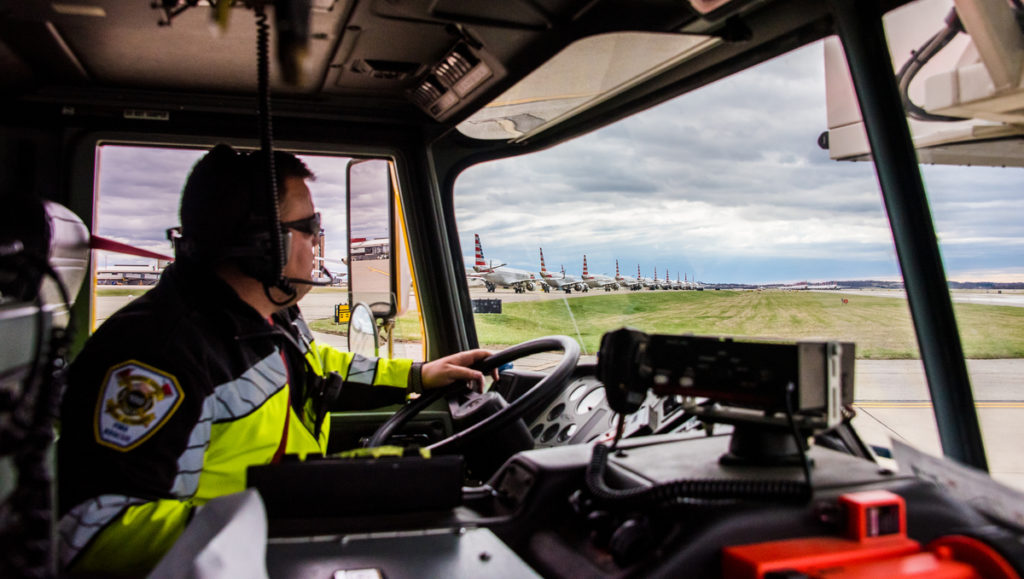
Firefighter Scott Frederick maneuvers an Aircraft Rescue and Firefighting truck on PIT’s airfield. (Photo by Beth Hollerich)
Efficient equipment
The FAA requires each department certified for ARFF to maintain a certain number of crash trucks, which typically carry water and dry chemicals to fight fuel fires.
Some trucks are outfitted with a turret and a “snozzle,” which can pierce the body of the aircraft and spray water inside.
Paired with a thermal imaging camera, firefighters can find and put out the source of a fire without putting themselves in danger.
“The trucks nowadays are actually quite high-tech,” Fuller said. “The equipment we use is very efficient in being able to fight fire right from the truck.”
Despite the extra training included in working as an airport firefighter, many responders are drawn to departments certified in aircraft rescue. Some previously served in military fire rescue agencies, specifically in the Air Force, while others have a general interest in aviation, said Bonura.
Airport fire departments are also a place where responders can find paid firefighting careers, as opposed to volunteer departments.
Lending a hand
Similar to municipal departments, airport crews are also prepared for fires in structures, such as hangars or parking garages, as well as car crashes, hazmat incidents and even water rescue, if there’s a body of water nearby.
Medical emergencies account for about 70 percent of the department’s 3,200 calls in a normal year at Minneapolis-St. Paul Airport, Fuller said.
“We’re much like a city, but we’re not a city,” he said.
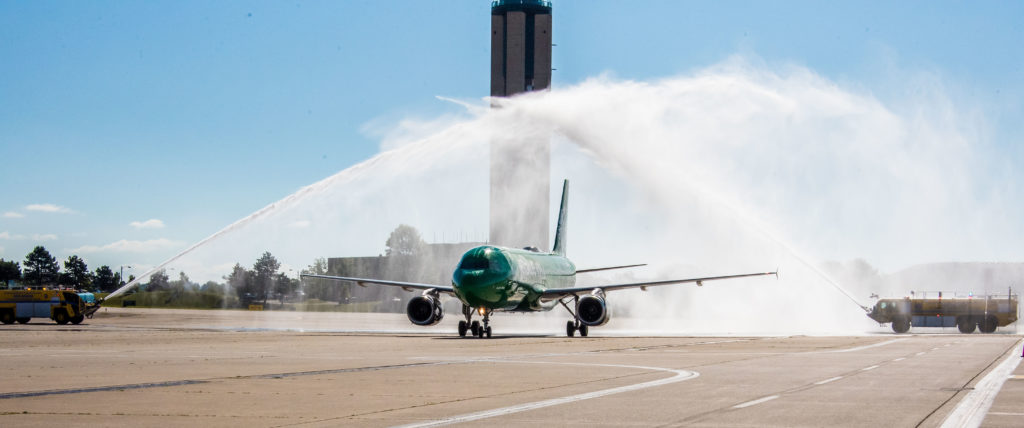
Airport firefighters perform a water cannon salute for retiring JetBlue pilot and Pittsburgh-native Emerick Aulicino at PIT on July 1, 2020. (Photo by Beth Hollerich)
At smaller airports, when they’re not responding to incidents, firefighters work in other areas of airport operations, as with Harrisburg (Pa.) International, where they help with wildlife management and assist the Transportation Security Administration on late incoming flights.
“There’s a lot of additional duties that get passed to the fire departments that aren’t typically in your job description,” said Jason Barclay, deputy fire chief for Susquehanna Area Regional Airport Authority.
Firefighters for the Washington Metro Airports Authority give public demonstrations at the Udvar-Hazy Center of the Smithsonian’s National Air and Space Museum, in addition to hosting classes on CPR, AED, fire extinguishers and first aid.
On 9/11, the Airports Authority fire department was one of the first to respond to the Pentagon attack because of its specialty equipment and Reagan National Airport’s proximity, about two miles away.
“It was an honor to be a first responder on that tragic day,” Pouget said.
Airport fire departments are also tasked with inspections and coordinating emergency plans with airlines and other tenants at each airport.
“We’re kind of like the eyes in the mindset of safety for the airport, you know, always watching what’s going on with different projects,” Bonura said.
And to top it off, firefighters at the airport understand that the airport is a business, so opening up a roadway after a crash or making sure a disabled plane is moved from the taxiway is a bigger priority than a municipal department might consider.
“The ARFF departments are partners with the airport to keep the operations running,” Krusleski said. “If they’re not, they should be.”
High expectations
Ultimately, though, most people flying into or out of an airport may never realize that a fire department is stationed there.
“The hardest part of your job is being prepared mentally and physically for an event that you don’t ever want to happen, but at any given time, you need to be able to respond to that life-changing event,” Barclay said.
If something out of the ordinary does happen, however, passengers have high expectations for and trust in the firefighters’ ARFF training.
“We take a lot of pride in ensuring that every day, not only the traveling public, but the employees of the authority and all the tenants can come to work, work safely, travel and never need us,” Bonura said. “However, we’re there for when they do.”

